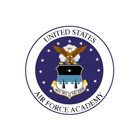
Special Restore Scenarios: Incremental, Differential & Selective File Recovery
Author: Swapna Naraharisetty, 2BrightSparks Pte. Ltd.
This article is an extension of the Restoring from a Backup article. In this article, we will discuss some special restore cases that you may need in some situations. For example: you may want to restore a single file from a large backup, restore from an Incremental or Differential backup, etc. For restoring specific versions of files, refer to our How To Restore From Version Files article.
Restore a Single or a Selection of Files from a Backup
To restore a single file, or a selection of files, from a backup:
- Select the Backup/Mirror profile you want to restore from and click the Restore button.
- The Restore Wizard will appear where you can choose a different folder for ‘Restoring From’ and ‘Restoring To’ settings or change the Advanced settings if needed.
- You can optionally choose which files you want to restore by simply clicking the Choose sub-directories and files button.
- Click on the ‘Restore Now’ button to start the restore process.
- With SyncBack V11 you may be asked if you want to create a Windows System Restore Point. There is no need to unless you are restoring system files.
- SyncBack scans the source and destination to detect file differences. Once done, it will display the Differences Window showing the list of files selected for restore along with their actions (Copy, Move, Delete).
- Change the Action to ‘Skip’ for all files shown on the Differences Window except for the file you want restore. You can select block of files using the multiple-selection methods such as Ctrl+LeftClick or Shift+LeftClick.
- Click on the ‘Continue Run’ button to continue the restore process.
Restoring from Incremental Backups
The purpose of an incremental backup is to back up data that has been changed since the last full or incremental backup.
When you restore from an incremental backup, first you need to restore from the latest full backup, then restore from all the incremental backups created after the full backup (if there are any). You need to start with the first (oldest) incremental backup after the last full backup and end with the last (newest) incremental backup.
For example, let’s say you have created a Fast Backup profile in SyncBack to perform a Full backup on Monday and Incremental backups on other days of the week. After 5 days you will have these backups:
- Monday: Full Backup - a complete backup
- Tuesday: Incremental #1 - file changes between the Monday full backup and Tuesday
- Wednesday: Incremental #2 - file changes between the Tuesday incremental backup and Wednesday
- Thursday: Incremental #3 - file changes between the Wednesday incremental backup and Thursday
- Friday: Incremental #4 - file changes between the Thursday incremental backup and Friday
Now, assume you want to restore from your incremental backup as your files are lost/corrupted. The restoration process should start with restoring from the full backup, followed by oldest incremental backup to the newest incremental backup. That means, you need to restore the Monday full backup first, and then restore the Tuesday, Wednesday, Thursday, and Friday incremental backups (in the same order).
The process to restore a Full or Incremental backup:
- Select the Fast Backup profile you want to restore from and click on the Restore button.
- The Restore Wizard will appear. Configure the ‘Restore From’ path to a full backup folder or the next incremental backup folder you want to restore from. For the ‘Restoring To’ path, set it to a sub-folder on the source drive where you want to restore. Change the default settings in the Advanced page (if needed).
- You can optionally choose which files you want to restore by simply clicking the Choose sub-directories and files button.
- Click on the ‘Restore Now’ button to start the restore process.
- With SyncBack V11 you may be asked if you want to create a Windows System Restore Point. There is no need to unless you are restoring system files.
- SyncBack will then scan the source and destination to detect file differences. Once done, it will display the Differences Window showing the list of files selected for restore along with their actions (Copy, Move, Delete).
- After reviewing the Differences Window, click on the ‘Continue Run’ button to continue the restore process.
Restoring from Differential Backups
Differential backups include files that have changed since the last full backup. When you restore a differential backup, you should restore the full backup first, followed by the latest differential backup.
Let’s say you have created a Fast Backup profile in SyncBack to perform a Full backup on Monday and Differential backups on other days of the week. After 5 days you will have these backups:
- Monday: Full Backup - a complete backup
- Tuesday: Differential #1 - file changes since the Monday full backup
- Wednesday: Differential #2 - file changes since the Monday full backup
- Thursday: Differential #3 - file changes since the Monday full backup
- Friday: Differential #4 - file changes since the Monday full backup
Now, if you want to restore from the Differential backup, first you should restore from the Monday full backup, followed by the Friday differential backup.
The process to restore a Full or Differential backup:
- Select the Fast Backup profile you want to restore from and click on the Restore button.
- The Restore Wizard will appear. Configure the ‘Restore From’ path to a full backup folder or the latest Differential backup folder you want to restore from. For the ‘Restoring To’ path, set it to a sub-folder on the source drive where you want to restore. Change the default settings in the Advanced page (if needed).
- You can optionally choose which files you want to restore by simply clicking the Choose sub-directories and files button.
- Click on the ‘Restore Now’ button to start the restore process.
- With SyncBack V11 you may be asked if you want to create a Windows System Restore Point. There is no need to unless you are restoring system files.
- SyncBack will then scan the source and destination to detect file differences. Once done, it will display the Differences Window showing the list of files selected for restore along with their actions (Copy, Move, Delete).
- After reviewing the Differences Window, click on the ‘Continue Run’ button to continue the restore process.
Restore Files After a Computer Crash
Let’s say your system crashed suddenly but you have a backup of your important files on an external drive. Now, we will show you the steps to recover your files using SyncBack after a system crash.
- Depending on the problem, first you may need to reinstall the operating system or roll back your system to an earlier build before the crash.
- Once the system is restored, download and install SyncBack and run it.
- If you have copy of your backup profile, then import it into SyncBack and run it as a Restore. If you do not have a backup of your profile you can simply create a new Backup profile in SyncBack. Configure the profile’s destination to a folder on the backup drive to restore from, and source to a folder on the local drive where you want to restore files to. Then select the profile and click on ‘Restore’ button.
- The Restore Wizard will appear, change the settings if needed and click on the ‘Restore Now’ button to start the restore process.
- With SyncBack V11 you may be asked if you want to create a Windows System Restore Point. There is no need to unless you are restoring system files.
- SyncBack will then scan the source and destination to detect file differences. Once done, it will display the Differences Window showing the list of files selected for restore along with their actions (Copy, Move, Delete).
- After reviewing the Differences Window, click on the ‘Continue Run’ button to continue the restore process.
Restoring Files from an Internal, External or Network Drive to Cloud, FTP, Touch, Zip File
To restore files from a standard resource (e.g. internal, external or network drive) to a non-standard resource (FTP, Cloud, etc.):
- Select the SyncBack profile you want to restore from and click on the Restore button.
- The Restore Wizard will appear, change the settings if needed then click the ‘Restore Now’ button to start the restore process.
- With SyncBack V11 you may be asked if you want to create a Windows System Restore Point. There is no need to unless you are restoring system files.
- SyncBack will then scan the source and destination to detect file differences. Once done, it will display the Differences Window showing the list of files selected for restore along with their actions (Copy, Move, Delete).
- After reviewing the Differences Window, click on the ‘Continue Run’ button to continue the restore process.
Conclusion
It is important for personal users and businesses to create a comprehensive plan for backup and recovery and perform restore tests frequently to ensure that a backup is reliable and consistent. For complex backups, more restore tests must be performed to ensure their backup and recovery is successful, and their data can be recovered in case of a disaster.
Noted Customers
© 2003-2025 2BrightSparks Pte. Ltd. | Home | Support | Privacy | Terms | Affiliate Program















